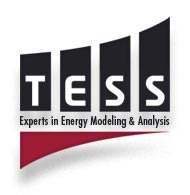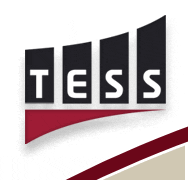22 NORTH CARROLL STREET - SUITE 300
MADISON, WI 53703
FAX: 608.278.1475
INFO@TESS-INC.COM
Software Development
The large majority of projects carried out at TESS involve the development and delivery of customized software or simulation tools. Every project is different but the kinds of software development that we do can be categorized under the following headings.
- New Model Development
- TRNSYS Kernel Development
- Customized Simulation Interface Development (TRNSED)
New Model Development:
Perhaps TESS’s greatest strength is our ability to quickly research, understand, and characterize the performance of new technologies and then code them into new models for the TRNSYS simulation environment. As an example, during 2006, we were asked to develop models for a radiator, a wastewater treatment cell, active and passive chilled beams, a footed slab on grade with skirt insulation and partial bottom insulation, exposed or buried twin-conductor pipes, and a photovoltaic panel with embedded phase change material. Many of these models are fully documented and made available for purchase through our TESS Component Libraries. Please visit the Model Development section under the Engineering Services heading for more information.
TRNSYS Kernel Development:
Since the TRNSYS source code is available to users, we have had significant opportunities to get close to the inner workings of the software and have, on occasion, made modifications (okay, there were a lot of occasions and there have been a lot of modifications). In recognition of our familiarity with the code, the TRNSYS Developers’ Group (the SEL, CSTB, and Transsolar) contracted TESS as a TRNSYS Subdeveloper in 2003. The group tasks us with making targeted and significant modifications, bug fixes and enhancements to the software package.
Customized Simulation Interface Development (TRNSED):
One of the perennial difficulties in carrying out simulation work is in how to report results; findings from a study invariably lead to the question “well, what if we changed…” To combat this problem, we rely heavily on a feature of TRNSYS that allows us to develop a simulation then recast it with a dedicated graphical interface. The interfaces look and feel very much like a web page and allow the client to change specific aspects and assumptions about the simulation, rerun it themselves and analyze the new results. Some of these dedicated simulations are available for free download too.
- RENEWisc: a renewable energy technology assessment tool
- ASHRAE 1120 TRP Equivalent Full Load Hours (EFLH): calibrated simulation models were used to derive equivalent full load heating and cooling hour estimates for buildings equipped with geothermal heat pumps in selected cities around the country. A software package is available on request.
- NREL / Building America SDHW Assessment Tool: assess the potential for using solar to heat domestic water.

